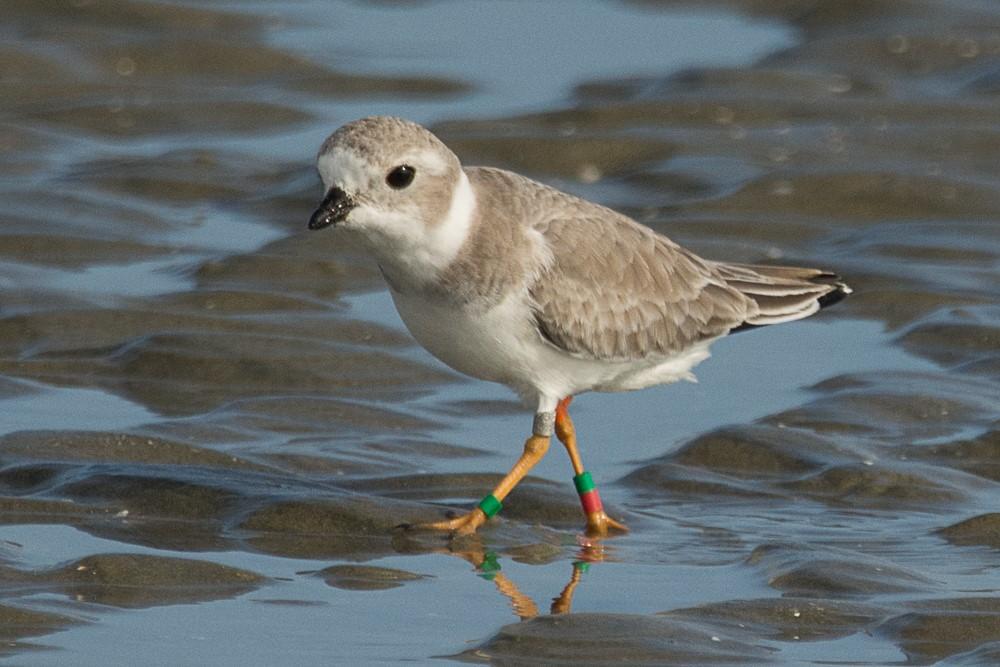Telling the "life story" of a bird is a fantastic way of connecting people to birds. Make it personal vs. just the data. Here’s a good example of a very personal Seabrook Island Piping Plover “life story” …
First, a little background... When my wife, Aija, and I spot banded Piping Plovers (PIPL) on Seabrook's North Beach, she spots them and records her sightings in eBird while I take photos. We send the photos to our biologist friends we’ve gotten to know: Alice Van Zoeren (Great Lakes Region), Great Lakes Piping Plover Conservation Team, University of Minnesota; Meryl Friedrich (Atlantic U.S. Region), Virginia Tech Shorebird Program; and Dr. Cherri Gratto-Trevor (Atlantic Canada Region), Prairie and Northern Wildlife Research Centre, Saskatoon Canada.
Alice, Meryl, and Cherri like to get immediate feedback and photos on where their PIPLs spend their winter, and they reply back to us with interesting information on the PIPL’s travels. Aija and I have developed email relationships with these researchers over the years. We even met Alice two years ago when we visited Sleeping Bear Dunes National Lakeshore in MI, where the Great Lakes Region PIPLs breed. A fascinating visit!
So, here’s the story... We spotted a PIPL banded with an orange flag and reported it to Alice Van Zoeren. This Great Lakes Area banded PIPL was spotted in November 2018 and again March 2019. An orange flag means Great Lakes.
Alice wrote back the same week in March 2019. “This plover spent the winter on Seabrook. You met her before, in November 2018. We don't know when or where she hatched since she wasn't banded as a chick, but she bred in 2018 at Grand Marais, MI and was banded at that time. She spent August 2018 at Cumberland Island, GA and then settled for the rest of the winter at Seabrook. She'll soon be headed to the upper peninsula. We're expecting our first plover at Sleeping Bear Dunes National Seashore any day now!”
So here’s the point. Great Lakes Region Piping Plovers are Federally Endangered. The Great Lakes were once home to nearly 800 pairs of Piping Plovers. Today, about 75 nesting pairs remain in the Great Lakes population. Just 75 nesting pairs. This tiny banded Piping Plover bred and then flew 1,000 miles south to Georgia in August. She hung around Georgia awhile until heading 150 miles north to Seabrook Island. Good choice little PIPL! Upon arriving last November, maybe she thought “this looks like a cool place to be, lots of space for foraging, big wide beach, protected critical habitat, the people seem friendly, they care about the birds and Audubon SC, SCDNR, and USFWS are involved, they try hard to follow the dog rules. I think I’ll stay for the winter!”
So now, with our help, this little gal is about to head north to breed again. And hopefully, she’ll be successful, because she's so important as one of only 75 Great Lakes female PIPLs needed to keep this endangered population going.

Pretty cool. Well done Seabrook Island for helping her rest and get strong for her long trip back north to breed! If she comes back to winter with us later this year, maybe we should give her a name. Any ideas?
Here’s the Great Lakes Piping Plover website about the great work Alice does: https://www.greatlakespipingplover.org/. To learn more about Piping Plovers and coastal conservation efforts in South Carolina, please visit our website.




